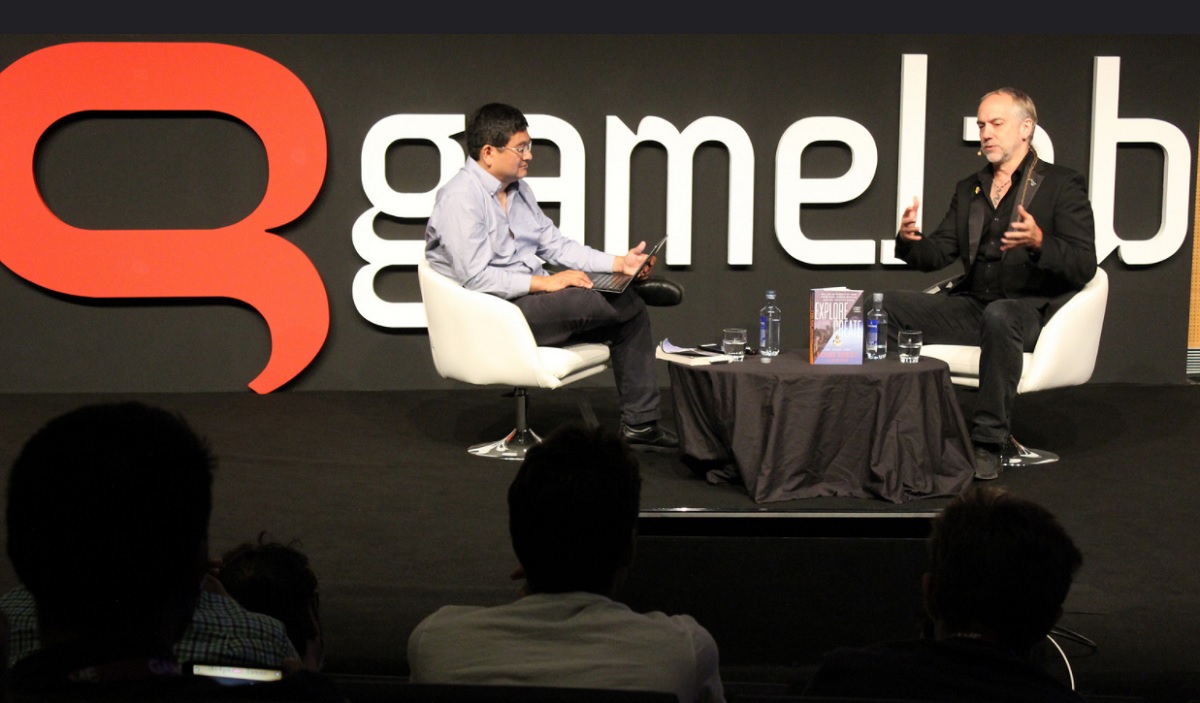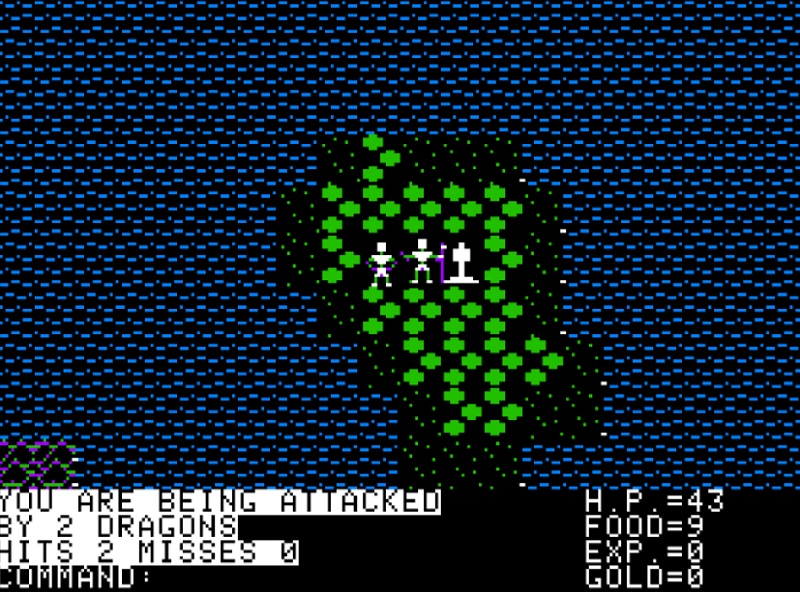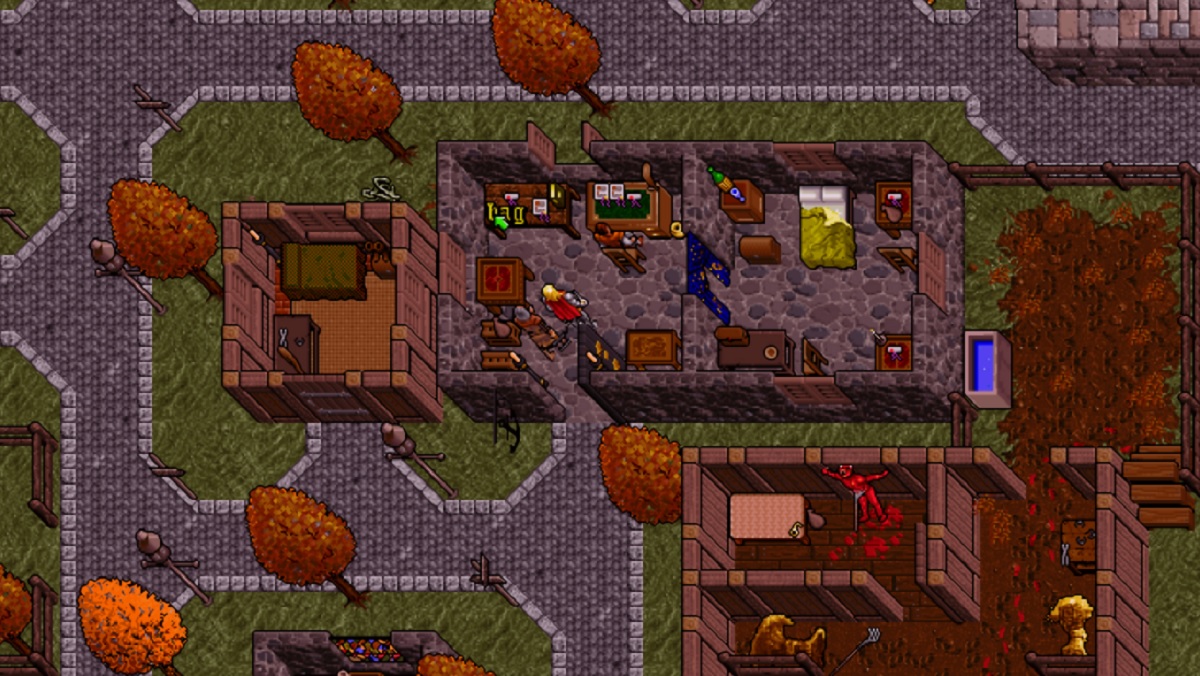Richard Garriott has had a wonderful life in video games. But the founder of Portalarium and creator of the Ultima series has also done quite a bit outside of video games, with enough adventures to last five lifetimes.
He coached a featherweight boxing champion. He almost starved during a journey on the Amazon River. He almost had a fatal rock climbing accident. He had to pull a gun on an overly enthusiastic fan who broke into his home in Austin, Texas. Yet, he creates legendary haunted houses for Halloween, welcoming everybody into his home. Like his father before him, Garriott journeyed into space. While he was up there, he showed a secret message to his Tabula Rasa online game fans while on a communications link back to Earth. And he journeyed to the bottom of the sea to get a close-up look at the Titanic.
Garriott published his first video game, Akalabeth, in 1979 while he was still in high school. He went on to create Ultima I: The Age of Darkness in 1981. The fantasy role-playing game led to a long career in games and spawned his studio Origin Systems. He and his brother Robert made numerous Ultima games and eventually sold the company to Electronic Arts in 1992. While at EA, he created the groundbreaking massively multiplayer online role-playing game (MMORPG) Ultima Online.
Garriott left EA to found Destination Games in 2000, and he sold the company to NCSoft in 2001. Garriott worked on the sci-fi online game Tabula Rasa, which debuted in 2007. The game didn’t sell as well as hoped, and Garriott left NCSoft in 2008. In 2009, he founded Portalarium, and raised $11.6 million via crowdfunding for Shroud of the Avatar: Forsaken Virtues. Recently, he started an additional equity crowdfunding campaign for the game.
June 5th: The AI Audit in NYC
Join us next week in NYC to engage with top executive leaders, delving into strategies for auditing AI models to ensure fairness, optimal performance, and ethical compliance across diverse organizations. Secure your attendance for this exclusive invite-only event.
Garriott chronicled his life in Explore/Create: My Life in Pursuit of New Frontiers, Hidden Worlds, and the Creative Spark earlier this year. I interviewed Garriott onstage at the Gamelab event in Barcelona, Spain, where he received the Honor Award from the Spanish Academy of Interactive Arts and Sciences. Here’s an edited transcript of our interview.

Above: Dean Takahashi of GamesBeat interviews Richard Garriott at Gamelab.
GamesBeat: You started very early, in the ‘80s, making the first Ultima game in high school and progressed over the years to work for Origin, Electronic Arts, Destination Games, NCSoft, and now Portalarium. Tell us about those early days and the eras you’ve seen in games.
Richard Garriott: I feel very fortunate. I’m just about the right age to have come of age, in high school, as personal computers were invented. Before I released the first Ultima, I’d written a series of games on a teletype, an electromechanical typewriter connected with an acoustic modem to a machine still using core memory, little donuts of ferrous material that stored individual bits. Very primitive, but if you look at these games I made in the ‘70s, other than using asterisks for walls and spaces for corridors, they were still obviously the prequels to Ultima.
At the age of 19, when I began to publish games, I was one of the only people at that time. But as I’ve gotten older, there have always been waves of new young people getting into the industry. There are a few gray-haired people here going back to those earliest days, but I’ve been perpetually one of the oldest people in the industry, even when I was only 21 or 22. It was a wonderful time to get started because it allowed us to set the standards of different genres, terminology, even tools and techniques that have evolved since.
GamesBeat: How do you view some of the lows and highs of your career?
Garriott: I’ve been making games now for almost 40 years. Fortunately, I’ve had some great highs through that. If I look at my favorite games down through the years, I’d have to pick Ultima IV, Ultima VII, and Ultima Online as highlights. As I contrast the highs versus the lows — if any of you have played Ultima, I’d guess that those three might also be on many other people’s short lists. But all three of those were games that, when I started making them, it was difficult to convince people around me that they were good ideas. I was deviating significantly from what was already popular, even what was popular within my own games. I’d get advice against doing those [for] one reason or another.
On Ultima IV, Ultima III had been my first Origin game, the publisher my brother and I started. We got fan mail that described how people were playing. While I thought people would be heroic, they wrote in and said, “I loved defeating the bad guy, but it was really fun killing all the NPCs in the game, killing Lord British, and stealing from all the shops.” Basically, min/maxing the game system to become powerful and win. As I read that feedback, I realized they weren’t being heroic at all. They were lying, cheating, and stealing. So, I wanted to stop that, to force them to be virtuous in order to succeed.
That’s when I adopted the word “avatar” from a religious context. I put virtual karma in the game. My brother and my family thought it was a terrible mistake to hear feedback from players saying why they liked my game and immediately tell them that I wouldn’t let them play the game that way. But it was the first top-selling game I did.

Above: Richard Garriott built Ultima I when he was in high school.
GamesBeat: People had to make moral choices, right? They had to behave better.
Garriott: Exactly. In fact, very specifically — when you look at the way I did this, I introduced a moral philosophy. I put a lot of research into moral philosophy. I tried to seduce players into behaving badly and then would keep a karmic registry behind their behavior. Later, if they’d been lying, cheating, and stealing — which most of them had been — the characters they stole from, who they needed to help them, would say, “I’d love to help a hero, but you’re a dishonest thieving scumbag. I’m not helping you.”
That turned out to be a very powerful game mechanic, kind of a revelation to players. It changed how role-playing games could be generated.
GamesBeat: With this kind of research you did for your games, you mainly had to teach yourself, right? You had to be a polymath.
Garriott: If you look at my educational career, not only am I a college dropout, but even when I was in school, in grade school and high school, I wasn’t a particularly good student. I did independent projects very well. I was a great science fair competitor. But I wasn’t particularly studious in English, history, philosophy, name the subject.
As soon as I had applications for it, though — as soon as I realized I was going to include moral philosophy in a game, I had to understand moral philosophy. I became a voracious reader and consumer of a wide variety of topics. For pretty much every game, I’ve gotten an entire new library of subject matter, digested it thoroughly, and then tried to do an original creation around that topic.

Above: Aragorn in The Lord of the Rings.
GamesBeat: As far as inspiration goes, it seems like your main inspiration was J.R.R. Tolkien, author of The Hobbit and The Lord of the Rings.
Garriott: That’s definitely a foundation. In my best imagination of myself, I think of myself as a Tolkien-style game designer. What I mean when I say that — as soon as I started reading Tolkien, I personally came to the belief that his understanding of the world in which his characters were living was not just deep but astoundingly deep. The layers upon layers of reality crafting he had done for the world before he even unleashed his characters into the world — I was constantly impressed with that.
After reading The Hobbit and The Lord of the Rings and The Silmarillion, I went back and read all his unfinished work. I read English translations of Kalevala, the Finnish oral histories that inspired a lot of his unfinished tales and the pieces built on top of that. So, I feel the same way. By researching deeply the worlds that we’re crafting, it creates meaning and context and depth within the stories we eventually layer on top of that.
GamesBeat: In your book, Tolkien provided you with a very inspirational quotation, about how he felt as if he created languages for his world and then the stories came from that process. This is something you’ve done in your games as well.
Garriott: If you look at the cloth maps that the Ultimas are well known to have included as one of these anchor pieces you’d get in the box — I presume most of you have read The Hobbit. You may have had a moment like I did, when you saw the map with the strange writing on it, and then, you move on, and only after a chapter or two of the book, you realize that that writing isn’t just a scribble. It’s real words that are in fact quite easy to read because it’s made in this runic language that’s an easy letter for letter cipher into English. To me, that was a great revelation, to realize that this wasn’t just made up. It had a sense of truth to it.
I went back to the same source Tolkien did, the druidic runes, to create a slight variation of my own for Ultima. But I kept that — to where I have research projects going on to this day about symbolic languages, phonetic languages, and other structures that try to improve how to present languages in a game context. For example, runic is great if you speak English, but it’s terrible if you speak Japanese. You first have to convert it from runic into English characters to get an English word, then translate that word into whatever your domestic language is. Something that’s easy for an American becomes doubly difficult for anyone else. Solving that problem — making universal languages that both create a sense of mystery and depth in the game world but don’t increase the difficulty for anyone to understand — has been one of my pet projects.

Above: Ultima VII.
GamesBeat: Your brother Robert works with you on a lot of these projects. He’s the business guy. I can imagine him saying something like, “Isn’t this a little extreme?”
Garriott: Unquestionably. If we’re in the business of making games, it’s inevitable that you have the artistic desire to create great art, which is unhampered by time, money, and the need to return value, but if you’re doing it as a business, you have to be able to plan ahead, afford to create it, have it complete before you run out of money, and then ultimately generate enough money to sustain profitability and make the opportunity to do it again. That’s one of the challenges in any creative art, to layer those two things together.
In this case, with my brother and I working together — he’s technically retired now, but for 35 years, we were business partners. That interplay, I think, helped us in the long run to make good decisions.

